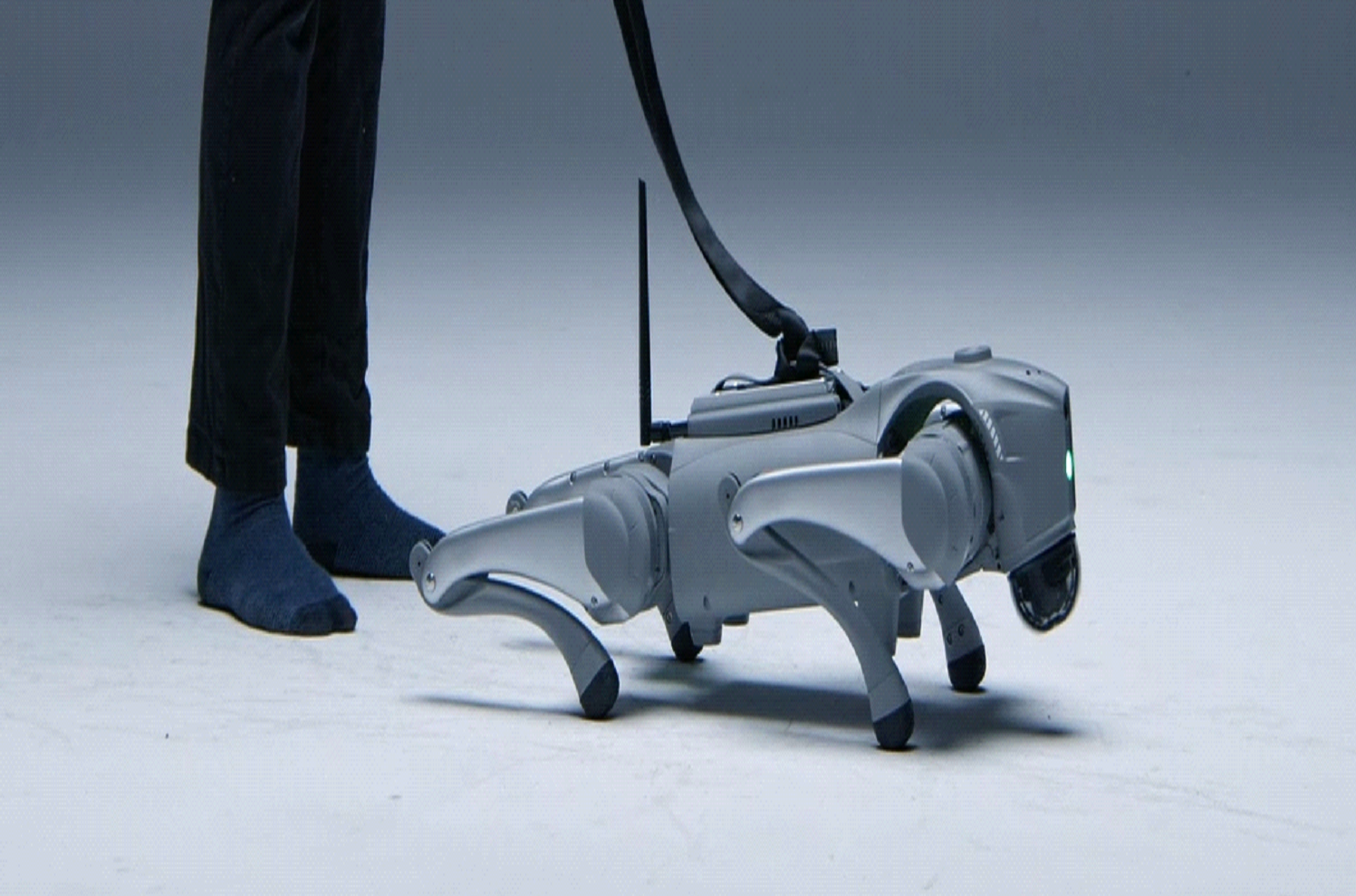Robot with digital nervous system learns ‘like a human’ in world first
IntuiCell says technology represents ‘paradigm shift’ in AI and robotics than can scale to human-level intelligence
AI engineers have developed the world’s first ‘digital nervous system’, allowing robots to learn in the same way as humans through physical experience in the real-world.
Swedish startup IntuiCell unveiled the breakthrough technology in a robot dog called Luna, demonstrating how the biologically-inspired network allows it to learn skills, adapt to change, and improve over time.
A video of the robot shows it learning to stand up without any prior training, appearing similar in its efforts to a newborn giraffe.
“We’ve created the first software that enables any machine to learn like a human or animal – to solve new problems as they emerge and adapt to unforeseen changes in real time,” IntuiCell CEO Viktor Luthman told The Independent.
“There’s no pre-training, no simulations, no labelled data... Intelligence is not something that will magically emerge when we add enough data or compute – it needs to be there from the start.

“We are not talking about today’s AI vs tomorrow’s AI. We are talking about machine learning vs biological intelligence, now translated into software for the first time. Machines that truly learn and adapt – not just process patterns faster.”
IntuiCell claims that the digital nervous system allows both physical and digital machines to overcome the limitations of current robots and AI systems, which use pre-trained models built on massive datasets.
The new approach is even capable of scaling naturally to human-level intelligence over time, with IntuiCell CEO Viktor Luthman saying it marks “a new inflection point” for artificial intelligence.
“The idea that we’re going to simply scale up current technologies and magically achieve human-level AI is flawed,” Luthman said.
“Scaling doesn’t change how the current AI paradigm learns, it just refines how well it predicts. It improves performance but it can’t break through into real-world intelligence. With our breakthroughs that’s what we’ve solved.”

Luthman said he was unsure where the technology would be used in the real-world, claiming it was like trying to predict in 1990 how the internet would be used in the future.
Potential applications include humanoid robots that could learn how to clean any house, assist in hospitals, or even learn to drive a car.
The way the machines learn allows them to operate in unpredictable environments and even learn through human collaboration.
“IntuiCell’s AI is not just an improved version of machine learning; it is an entirely new category of intelligence,” said Udaya Rongala, a researcher and co-founder of IntuiCell.
“The obsession with brute-force scaling, billions of parameters, more compute, and more data is an artifact of a fundamentally wrong approach to achieving intelligence. IntuiCell is not chasing a bigger-is-better paradigm. Intelligence is not our end-goal, but our starting point.”
Join our commenting forum
Join thought-provoking conversations, follow other Independent readers and see their replies
Comments